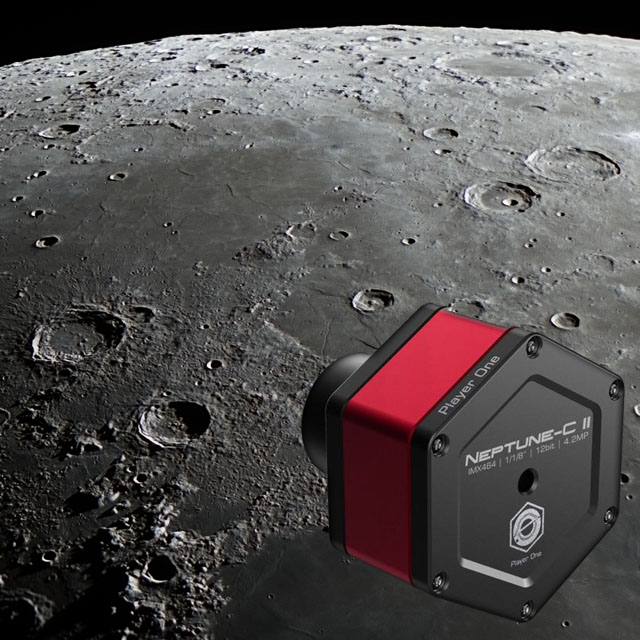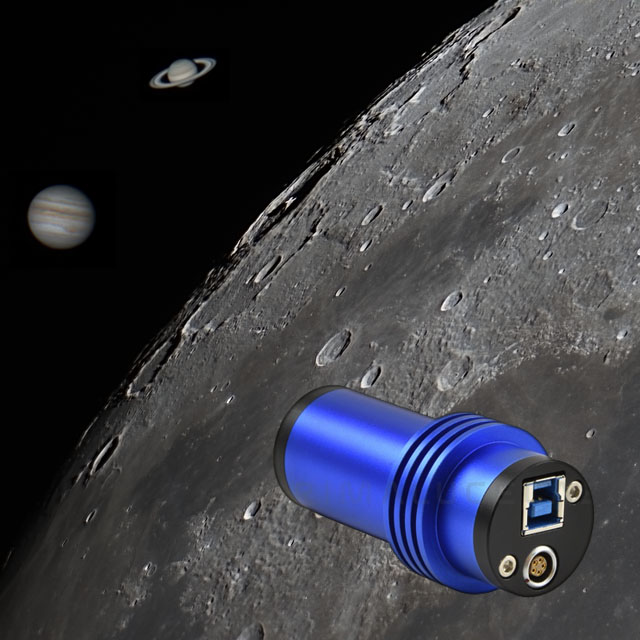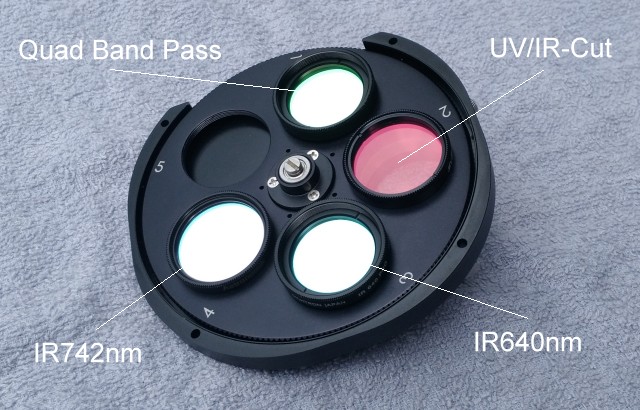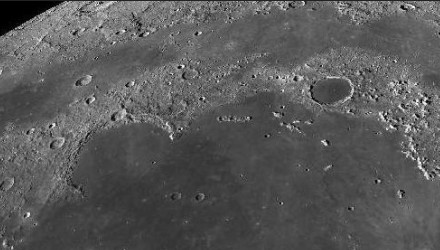Recommended Planetary (Lunar) Cameras
The currently best-known suppliers of planetary (lunar) cameras are "QHYCCD" and "ZWO Company". In April 2021, the company "Player One Astronomy" joined the competition. The three imaging expert companies are adopting the same CMOS image sensors from Sony, in that except for electronic hardware and housing, the imaging performance is the same. Since pricing is very similar, which to go for is principally a matter of how you like the camera body. For this reason this article refers to the part numbers of the Sony image sensors rather than the camera supplier's product name.
Now we are getting to the painful section, namely which camera to choose. As to the first hurdle, there are monochrome and color cameras. Fundamental difference being, monochrome cameras are sharper and unveil more details than color cameras, the latter coming with a "Bayer Matrix" which splits incoming light into a pattern of RGB colors, thus sacrificing resolution. Interestingly, monochrome cameras carry higher price tags. Simple reason being, Sony and others sell more color sensors than monochrome in that the production cost of color is much lower.
The moon is a target inviting both monochrome and color imaging. If you own a monochrome camera, you can add optional color filters and a filter wheel, then take images each through a red, a green and a blue filter in addition to a luminance image through an IR-cut or IR-pass filter to add contrast. A so composed color image is as finely resolved as a monochrome image, however at the expense of longer recording time and additional filter set. A mechanical filter wheel and a filter set (1.25 inch) cost about as much as a "one-shot" color camera as an alternative to a filter set.
The following images showcase the form factors of three suppliers.
Background images in color (left and middle) with ZWO ASI462MC and Svbony IR-Cut filter, monochrome (right) with ZWO ASI290MM camera and 640nm IR-pass filter. Celestron C8 telescope at native 2030mm focal length.
Player One Astronomy

Features
- Pentagon shape
- Tilt adjustment ring
- Internal 256MB DDR3 buffer
- Tripod thread
QHYCCD

Features
- Eyepiece size, cylindrical shape
- Rigid autoguide socket
- Different case colors
ZWO Company

Features
- Round shape
- Come with all-sky CS lens
- Tripod thread
Also, Svbony's camera portfolio includes an IMX290 based monochrome model, the SV305M Pro.
About Filters
Without any filter, visual and infrared wash each other out reducing resolution, in that you typically image either in visual or in infrared, a choice which basically depends on the atmospheric seeing condition (applies to both, monochrome and color):
Visual with an UV/IR-Cut filter:
PROS: higher sensitivity, shorter exposures, higher frame rates, higher resolution.CONS: prone to bad seeing.
Infrared with IR-pass filter:
PROS: compensation for bad seeing.CONS: longer exposures, lower frame rates, slightly lower resolution.
Notes:
1. The camera's sensitivity decreases with increasing wavelength (exception IMX462/IMX464).
2. Longer infrared wavelengths sacrifice a little image resolution.
UV/IR-cut filters pass wavelengths between 400nm and 700nm, while infrared pass filters are available with edge wavelengths of 640nm to 850nm. As a rule of thumb, when seeing is good, go with visual, when poor, go with infrared. Often, a good compromise is a Red filter around 610nm when imaging in monochrome. Infrared pass filters block the sky background of advanced dawn allowing imaging of the planets and the moon at daylight. Some color cameras come with built-in UV/IR-cut filter, most however with an anti-reflection protection glass. A (mechanical) filter wheel makes filter swapping much easier and helps maintain image framing.
Mechanical Filter Wheel

Recommendations
Monochrome Camera
Cameras housing the monochrome IMX290 sensor are great for lunar imaging. The sensor's sensitivity peaks at 600nm wavelength and is still 95% at 640nm and 75% at 740nm (both near-infrared), allowing for short exposure times and high frame rates (172fps max. at full resolution). The recommended IMX290 camera sensor measures 5.6 x 3.2mm with 2.9μm pixels, a total of 1936 x 1096 pixels. The IMX290 color version has been discontinued.
Color Camera
A recommended color camera comes with the IMX462 sensor which has the same dimensions as the IMX290. The IMX462 excels with high infrared sensitivity peaking at about 800nm though at the expense of sensitivity in the visual domain, but not dramatically. The maximum frame rate is 138fps. Since sensor and pixel size are the same, both the monochrome IMX290 and color IMX462 supplement each other. The larger, but else identical IMX464 is twice the size of the IMX462 by area.
The IMX485 is four times the size by area but with the characteristics that of the IMX290 color sensor (discontinued) and does not provide the high infrared sensitivity of the IMX462 and IMX464 sensors. Like all cameras, the IMX485 can be binned 2x2, i.e., four pixels can be combined into one (by the driver software) to obtain the pixel count of the IMX290 sensor with a pixel size of 5.8μm. Advantages of larger pixel size include higher sensitivity and less noise. The drawback is a smaller field of view namely a quarter by area.
Update: sporting the same mechanical sensor size, the IMX585 supercedes the IMX485 with higher sensitivity and full-well capacity.
Hereafter, the field of view with a Celestron C8, FL = 2030mm telescope.
IMX290 / IMX462
 1936 x 1096 pixels (IMX485 2x2 binned)
1936 x 1096 pixels (IMX485 2x2 binned)
IMX464
 2712 x 1538 pixels
2712 x 1538 pixels
IMX485
 3840 x 2160 pixels
3840 x 2160 pixels
FOV Simulator
Conclusion
Monochrome: IMX290 sensor based.
Color: IMX462/IMX464 sensor based (peak in infrared), IMX485/IMX585 for a wider field (peak in visual).
Other
A (user-supplied) computer with a fast SSD disk and USB 3.x port is recommended for smooth video recording without frame dropping and frame buffering. "SharpCap" and "FireCapture" are popular camera control and capture software packages while some camera suppliers offer own solutions.

